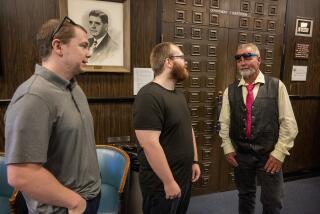Slaughter of the innocence
In November 1994, a Lodi man named Pete Rose not the famous baseball player was arrested for the kidnap and rape of a 13-year-old girl. Rose told a judge he didn’t need a lawyer, since he wasn’t guilty, but he nevertheless accepted San Joaquin County’s appointment of attorney Harry E. Hudson Jr. to defend him at trial. It didn’t help. A jury convicted Rose, who was sentenced to prison for 27 years.
Nearly a decade later, students at Golden Gate University School of Law’s Innocence Project began investigating the case and obtained a semen sample from the rape victim’s clothing; a DNA test proved that Rose was not the assailant. After he was released, the victim read about him in the newspaper and according to a law review article on Rose’s case by former Golden Gate Innocence Project Director Susan Rutberg told the reporter:
“I was never sure. The police pressured me to name someone. I only went along with them because I thought they had other evidence lined up against Rose.”
In 2005 Rose, now released, was formally exonerated and found factually innocent a rarity in criminal justice proceedings, well beyond a simple acquittal of the charges against him. He had spent 10 years at Mule Creek State Prison, where he was incorrectly considered a child rapist.
Rutberg argues in her article that Hudson, the defense lawyer, “failed utterly to mount a persuasive defense.” The police interview with the victim had been taped, and in it she could be heard telling the police that she didn’t see the man’s face and couldn’t identify him. Hudson didn’t use that tape to impeach the victim’s trial testimony that Rose was the assailant, nor did he file a motion to suppress the victim’s in-court identification of Rose as the result of a coercive police interrogation.
In her article, Rutberg details instances of what she labels prosecutorial misconduct as well as ineffective assistance of counsel. But there is another frustrating chapter to Rose’s story.
The wrongly convicted man, finally exonerated and released, without employment for 10 years, with four children to support and badly in need of money, sued his lawyer for malpractice. But he couldn’t get the case to trial, since the statute of limitations for legal malpractice had expired.
The time begins running when the client finds out, or should have found out, that his lawyer’s work had fallen below the acceptable standard. Rose showed he believed his lawyer committed malpractice as early as 1996, when he filed an appeal based on ineffective assistance of counsel.
One other, and bigger, problem: In order for a client charged with a crime to prove his lawyer committed malpractice, the client must show he was factually innocent. Makes sense; the malpractice can’t be all that bad unless the lawyer represented an innocent man so poorly that he was convicted.
But wait; you have to sue before the limitations period runs, but your suit can’t go forward unless you can show you were factually innocent. The poorly represented and wrongly convicted criminal defendant is practically locked out of any relief against a negligent lawyer. The only way out of the Catch-22 is for the wrongly convicted person to sue, while still in prison, and ask the court to stay the suit while the inmate pursues appeals and other post-convictions remedies.
A panel studying California’s criminal justice system has a better way. The California Commission on the Fair Administration of Justice on Friday called for the malpractice statute of limitations to start running after the “granting of post conviction relief”; in Rose’s case, that would be the final ruling finding him innocent.
It’s just one of many recommendations aimed at erasing some ironic and agonizing quirks of law that work against wrongfully convicted Californians.
For example, a paroled felon gets assistance from the state to ease the transition. Parolees get help finding housing and jobs. They get counseling to deal with personal and family problems inherent in moving from incarceration back to freedom.
But you have to be on parole to get that help, and if you’re exonerated, you’re not on parole. People like Rose can apply for $100 in compensation for every day they were wrongfully imprisoned if they have the foresight to ask for it within six months of their release or pardon but despite any psychological damage they may have suffered from being wrongly convicted and locked up, they don’t get any of the services parolees get.
The commission is calling for legislation that for the first time would require the judge at the exoneration proceeding to advise the wrongfully convicted person of the right to apply for compensation. The applicant would have two years to act instead of just six months. Services made available to parolees also would be provided to the innocent ex-prisoners.
Assemblyman Jose Solorio, (D-Anaheim), plans to introduce a bill on some of the commission’s recommendations.
But many of the panel’s findings call for money. The commission called for compensation to at least match the $50,000 a year paid for false federal imprisonment, or $100,000 for every year an innocent person wrongly spends on death row. More fundamentally, California already has cut its budget for providing counsel to assist prisoners in their innocence claims. The various law-school-based innocence projects, which have helped exonerate 11 people in the state, may be forced by lack of funding to cut back their work. That means state legal agencies would have to pick up the slack but in this disastrous budget year, their resources too are threatened.
The report, while vital, is just a fraction of the work the commission is doing pursuant to direction by the California State Senate. Last year, legislation recommended by the panel to correct problems that least to false confessions and bad suspect identifications passed both the Senate and the Assembly, only to be vetoed by Gov. Arnold Schwarzenegger. Lawmakers will try again this year.
The most controversial, and most anticipated, report is expected later this spring after the panel concludes hearings on the administration of California’s death penalty. Commission members are grappling with recommendations to reduce the backlog of post-conviction death penalty proceedings, including a call by Chief Justice Ronald George to allow the intermediate Court of Appeal to handle much of the review currently vested in the state Supreme Court. Any change must go to the voters in the form of a constitutional amendment.
The commission is headed by former state Attorney General John Van de Kamp. It was originally to disband at the end of last year, but the Senate extended its powers to June 30, 2008.
Robert Greene is a member of The Times’ editorial board.
Send us your thoughts at [email protected].More to Read
A cure for the common opinion
Get thought-provoking perspectives with our weekly newsletter.
You may occasionally receive promotional content from the Los Angeles Times.











